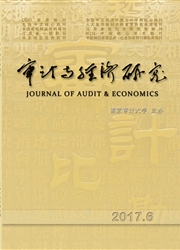

 中文摘要:
中文摘要:
改革开放以来,中国经济保持持续高增长,但居民消费一直处于低迷状态,在人口老龄化的大背景下,研究人口老年化对我国消费增长的作用具有重要意义。在假设年龄是消费函数的内生变量前提下,对家庭的跨期消费选择进行建模,针对人口结构函数的不同形式分别给出消费函数的几种重要的性质,并着重讨论了人口结构与消费总量的关系。研究表明:老龄人口的增多不仅没有拉低消费,反而显著促进消费增长。再利用我国2005--2010年间各省面板数据,在检验变量内生性之后选择动态面板GMM方法进行估计,得到的结果和理论假设契合,即老年抚养比的提高对消费具有促进作用。最后,针对人口老年化和消费给出相关政策建议。
 英文摘要:
英文摘要:
Since China's reform and opening to the outside world, China's economy keeps on increasing, but the residents' consumption has been always low. Under the background of aging population, it is of great significance to study the problem of aging population and its impact on consumption. Under the supposition that the supposed age is the endogenous variable of consumption functions, we set up a model for the household consumption choices during a certain period of time. As to the dif- ferent kinds of population structure function, we illustrate some of important features of consumption functions respectively, and focus on the relationship between population structure and consumption aggregate. The study indicates that the aging popu- lation increase does not pull down the consumption but apparently pulls up the consumption instead. Further, by using the panel data from different provinces from 2005 to 2010, we choose the dynamic panel GMM method and make an estimate of the above effect based on the examination the endogenous variables, reaching a result which is in line with the above theoretical supposition, i.e. the increased rate of old people care contributes to the increased consumption. Finally, we make some pro- posals on the policy-making of aging population consumption.
 同期刊论文项目
同期刊论文项目
 同项目期刊论文
同项目期刊论文
 期刊信息
期刊信息
